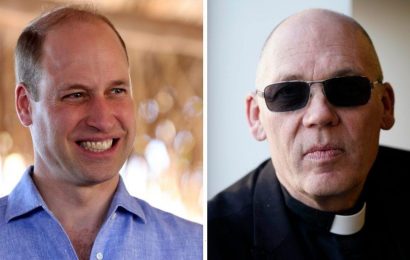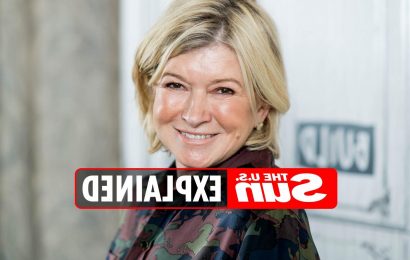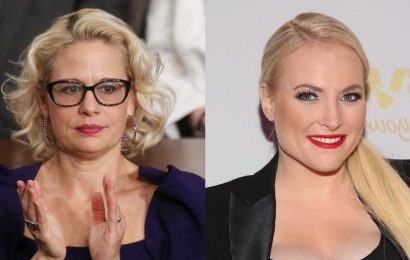Mark Duplass is in love with a lot of people.
He’s in love with his wife, yes, but he also wants the world to know that you can also be in love with your friends. “Language Lessons” is his and Natalie Morales’ ode to the platonic.
As co-writers and co-stars with Morales directing, they developed their characters separately, then came back together to see how the two would collide. Morales drew up a woman nicknamed Cariño, named for a Spanish word for “affection,” who has trust issues but still craves love. Duplass devised Adam, a shy but loving man who’s desperate for any distraction while he copes with a sudden tragedy. They meet online, Cariño as Adam’s Spanish teacher, and fumble around each other’s boundaries as they find themselves becoming friends.
Duplass and Morales both executive produced, lengthening the list of projects Duplass has produced over the last year, like “As of Yet” and “7 Days,” which are both explicitly pandemic-set. But no one ever says the dreaded p-word in “Language Lessons,” so it’s believable that it’s simply the distance between Oakland and Costa Rica keeping Adam and Cariño on Zoom. As Duplass said, “Hopefully, people would, when they wanted to, draw parallels to a pandemic-type world. And if they don’t want to, and they’re tired of that shit, we won’t throw it in their faces.”
Duplass told Variety about platonically falling for Morales, having survivor’s guilt and the beauty of happy endings.
How did this premise come together?
[Natalie and I] both admittedly had a very platonic and professional crush. We’re like, “We should be working together. We should be friends.” Then a couple of years ago, I knew she wanted to get into directing, so I hired her to direct her first episode of TV on my show “Room 104.” She just killed it.
I really wanted to share the screen with her. Cut to month two of the pandemic. I’m quarantining with my wife and my two kids. We all like each other, we’re exercising and keeping our endorphins up, doing puzzles and watching ‘90s movies. I was taking online Spanish lessons with this institute in Guatemala. We were not really small talkers. We ended up going deep — real quickly. I thought it was interesting that this sort of video communication, which we have come to understand limits intimacy, was actually facilitating it in this case, really helping us get closer. I thought, “Oh, wow, a movie with a Spanish teacher and her student, and a complicated relationship could ensue, and it’s a two-hander, and it’s small, and it’s cheap to make” — my brain just starts going.
I called Natalie very early, before I had developed much of the idea at all. It’s this new thing I’m trying to do: collaborate with people who are very different from me and bring them in as early as possible so that not every project I make feels like one of my old projects. It feels different. So we just built it together.
How did you approach co-writing?
We wanted this story to be something that felt really good, that was hard, but was essentially — dare I say it — wholesome, and made you feel like human connection is possible. Because everybody’s dealing with a shitstorm right now.
What was on our mind was, can you tell a love story that has zero romantic elements? Remove all possibility of will-they-or-won’t-they and just have it be how Natalie and I have experienced our own platonic relationships. Which is that they’re just as fucking complicated to navigate as our familial and romantic ones! Sometimes even more so, because there’s less of a defined path for platonic relationships. When you’re dating, you know what’s up. It’s like, “We’ll go on a couple of dates. Now we’re comfortable — here comes the kiss. Now we’re comfortable — here comes the next step. Are we going to be monogamous?” There are milestones. With friends, you can very quickly find yourself in a place where you have overshared or come on too quickly and scared someone away.
Since the idea of a platonic love story comes from your own lives, do your characters resemble you?
Adam is a [formerly] closeted gay man who was not able to accept himself. It kept him from being able to be free and express himself for years. I’m not really like that. I’m much more outspoken and go-get-what-you-want. That said, Adam comes on very strong with people, with a lot of love and a lot of care. He wants to take care of [Cariño]. I definitely have that. I have tons of, like, survivor’s guilt as a [former] struggling artist. You put any struggling artists near me, and I’m all over them, trying to save them and make sure that they don’t hurt as much as I hurt in my teens and 20s.
And that can go well sometimes, or some people can feel put off by that. I was able to experiment with that element of myself through Adam. I wouldn’t want to speak too much for Natalie, but she has said she can be a little guarded and mistrustful of people sometimes. We thought those would be perfect things to juxtapose. This person is coming on really strong, and [the other person is] feeling like, “What’s up with this white savior dude?”
The characters’ vulnerability shows up in different ways. For example, you can see Adam looking for approval in every word he speaks during his lessons. How good is your own Spanish? What did it feel like to perform in Spanish?
My Spanish is not as good as Adam’s, so I had to work to get it there. But I studied it in high school, in college, I kept it up. I’m semi-fluent. I would have felt really nervous and insecure if Adam was supposed to be fluent.
But we liked the idea that Adam would stumble around. It was super interesting for me to perform in my non-primary language. At times, it was great to be struggling to find the right words — literally struggling to find it, because we’re improvising — and use that as a metaphor. And then there are times where I literally can’t find the fucking word! I’d find myself getting into my head about it. But it was a challenge I was totally up for. I’m at the point in my career where I have pretty much no fear about looking stupid. I’m ready to go.
Another interesting element is when you flip between languages. Like when Adam tries to express embarrassment and says, “Estoy embarazado,” which actually means “I’m pregnant,” then says in English, “Why are you laughing at me?” Talk me through those moments.
When you’re making a movie like “Language Lessons,” you have to be careful about the limits. We only had one cinematic shot each, and you’re looking at it. Right now [on this Zoom screen]. Likewise, when it comes to editorial, we only have so much we’re able to do: either a big picture or a small picture. When they slip into Spanish or English, that was just one more dramatic tool that we could use to create variations and narrative aberrations. To surprise audiences, to keep them on their toes. And express insecurities or confidences. We tried to use it to different effects at different times. It was fun to craft a film where your bucket of tricks only has about six in there, whereas your normal film, you got about 150. You’re also thinking, “God, I wish I had these other 150.” This one was an exercise in working with extreme limits. And I appreciate you keying in on the language thing, because we spent a little time on, when are the times that he should respond in English [or] Spanish?
At the front of the film, whenever anyone’s speaking, it’s the person who’s in the big screen. It trains your eye to only go there. And then [editor Aleshka Ferrero] starts to throw increasingly more dramatic moments inside the small picture-in-picture, which your eye is not used to looking at. It throws you and shocks your brain. Because some of our early test screenings, people really liked [the movie], but they were kind of zoning the fuck out, as we do on Zoom. We had to try and find new ways to surprise people. Wake them up.
How do you feel about making COVID movies now that we’re less quarantined than we were a year ago?
It was perfect for us at the time. I loved making those movies. They were, in the moment, the right movies to make. I have this theory that — it’s a little bit of a bullshit theory, but I like it — you can spend five years preparing your perfect movie, making that script perfect. And that is a great way to make a movie, and I have seen incredible films made that way. Or, you can do the “Language Lessons” model: get your idea, get it as close to ready as you possibly can, go shoot it right away while you’re still in the honeymoon phase. While you’re still in love with it. You’re going to get rough edges, because you’re unprepared. But will those rough edges be overridden by the pump? The I-am-literally-making-this-movie-while-I’m-on-the-second-date-with-this-movie? That rising heat of the movie? That’s what “As of Yet”, “7 Days” and “Language Lessons” represent to me in art. I love making stuff like that. I think you’ll see a lot more of that from me. I just like the alacrity with which they’re made.
Did you always know how “Language Lessons” would end?
We did. In fact, the ending is the first scene we shot, due to some logistics. What we knew was that we wanted to see more [platonic relationships] on screen, and we wanted to explore them to the depths with which we see them. Natalie and I were excited to fall deeper into platonic love on and off-screen. If someone walks away and they feel like, “Hey, there’s a lesson to be had about the way that you should treat people,” that would be great. Extrapolate away.
Source: Read Full Article







